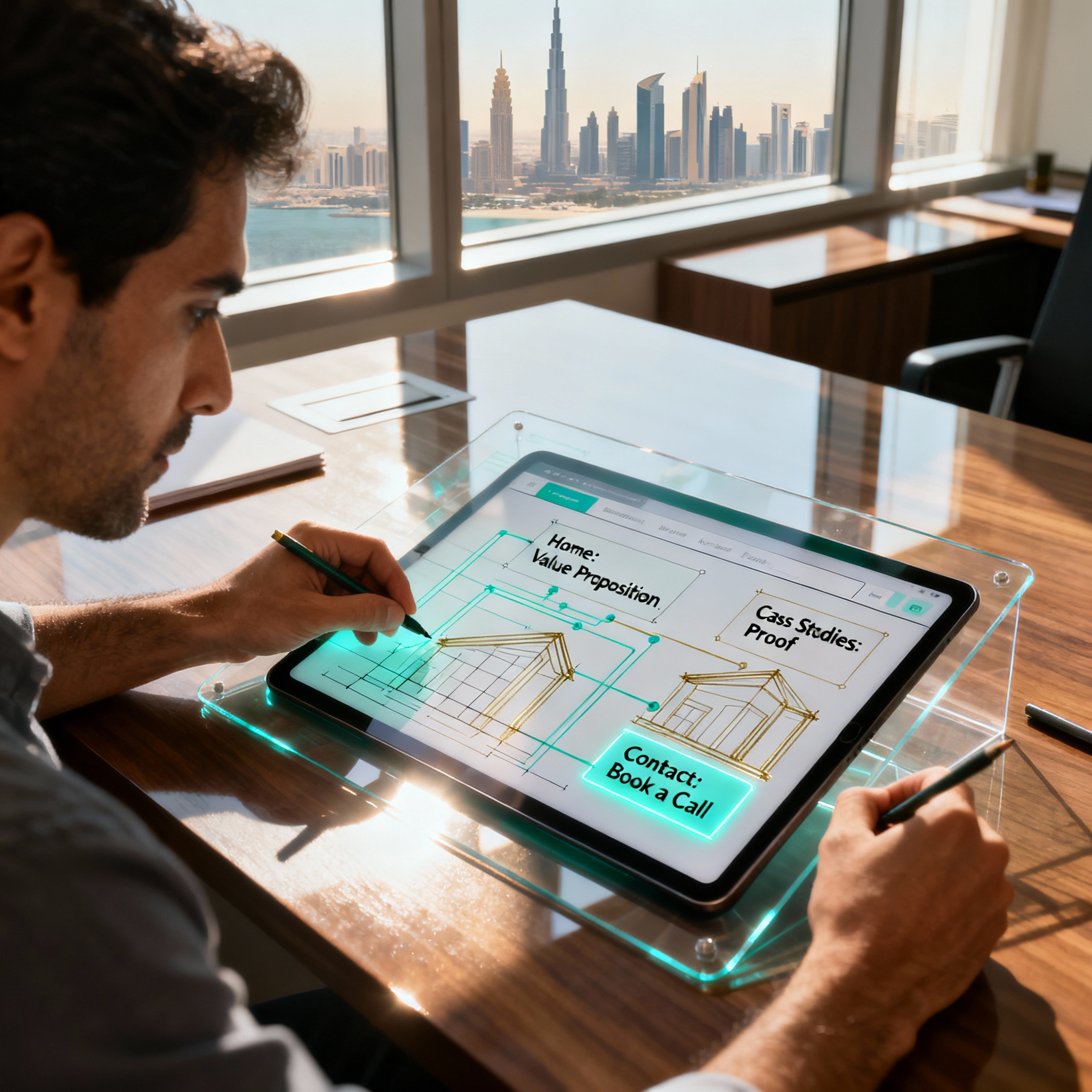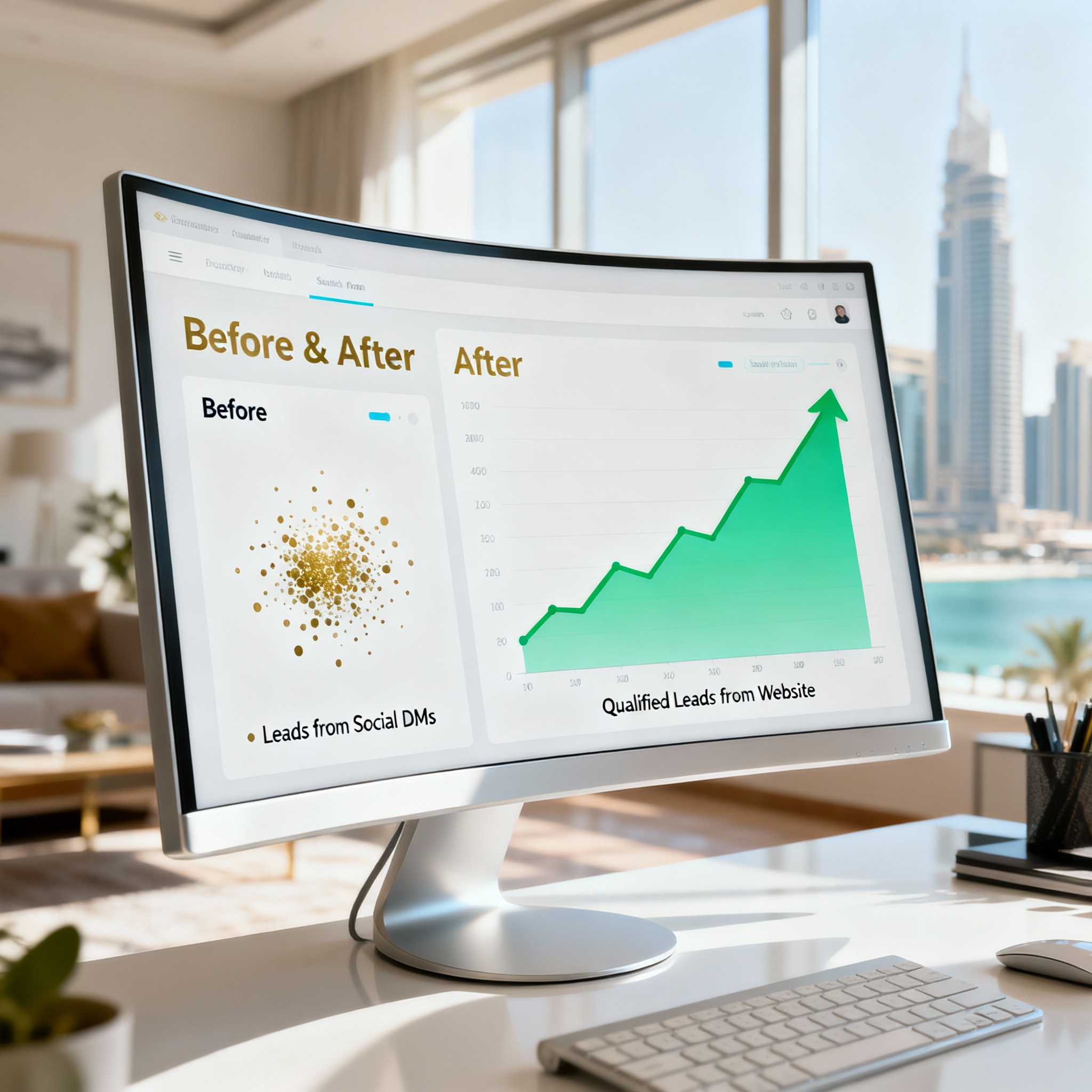Your Personal Website is Your Best Salesperson: A Founder’s Guide
Your expertise is scattered across LinkedIn posts, old slide decks, and client emails, leaving potential customers guessing about the value you deliver. This forces you to repeat the same pitch on endless discovery calls. A strategic personal website stops the scatter; it centralizes your authority, filters for serious clients, and works 24/7 to turn your experience into inbound opportunities.
Key Takeaways
- Control Your Narrative: A personal site is the only platform you truly own. It’s your central hub to define exactly how the market sees you, independent of algorithm changes on social media.
- Automate Lead Qualification: By clearly stating who you help and showcasing specific case studies, your website pre-sells and filters prospects, ensuring the calls you take are with high-intent buyers.
- Build a Long-Term Asset: Unlike a social profile, your website is a compounding asset. Every article and case study you add builds your SEO authority and continues to generate leads years later.
- Measure What Moves the Needle: Simple analytics can show you which pages and case studies generate the most demo bookings, allowing you to double down on what works.
- From Founder to Authority: A personal site is the fastest way to package your operational knowledge into a clear, hireable value proposition.

The 3-Phase Framework to Launch a Client-Winning Website
Most founders overcomplicate this. They obsess over design trends or complex tech stacks. The goal isn't to win a design award; it's to win clients. Follow this lean, action-oriented framework.
Phase 1: The 1-Hour Strategy Blueprint
Before you write a single word or look at a template, you need to define the job of your website. Get this right, and the rest falls into place.
- Define Your #1 Goal: What is the single most valuable action a visitor can take? It's not "to learn more." It's specific. Examples: "Book a 15-min discovery call," or "Request a quote." Every element on your site must guide visitors to this action.
- Identify Your Ideal Client Profile (ICP): Be ruthless. Who do you deliver the most value to? Get specific. "B2B SaaS companies in the UAE" is okay. "Post-Series A SaaS founders in Dubai struggling with user retention" is better. Your website should speak directly to this person's pains.
- Map Your Core Offer: Structure your value proposition clearly. Use this formula for your homepage headline: I help [Your ICP] achieve [Specific Outcome] through [Your Unique Method].
Phase 2: The 80/20 Content That Converts
You don't need a 20-page website. You need four high-impact pages that do the heavy lifting.
| Page | Purpose & Key Elements |
|---|---|
| Home | Grab attention and direct traffic. Must include your core offer headline, a clear call-to-action (CTA) button, and logos of clients you've worked with. |
| Case Studies | Provide proof. Don't just list responsibilities. Use a simple Problem → Action → Result framework. A client saw a 22% increase in demo bookings in 30 days after we implemented our system. That’s a result. |
| About | Build trust. Frame your personal story through the lens of your client's problems. How did your experience lead you to develop the solution you now offer? |
| Contact/Book a Call | Remove friction. Embed a Calendly link directly on the page. Don't make potential clients hunt for a way to pay you. |
Ready to automate your lead flow? Let us build the AI workforce that powers your website's qualification and booking engine. Book a 15-min demo to map your first agent.
Phase 3: The No-Nonsense Tech Stack
Speed to market is more important than a perfect technology choice. The goal is to get your site live and generating feedback (and leads) as quickly as possible.
- For a Simple One-Pager: Use Carrd. You can go live in an afternoon.
- For Visual Control & Scalability: Use Webflow or Framer. They offer powerful design control without needing to write code.
- For a Content-First Approach: If you plan to blog extensively, Ghost is a clean, focused platform.
Before launching, one founder we worked with relied on scattered LinkedIn DMs for leads. After launching a simple, two-page personal site with three case studies, her inbound, qualified demo bookings increased by 40% in just 60 days. The website did the selling for her.

Frequently Asked Questions (FAQ)
- What's the difference between a personal site and a LinkedIn profile?
- You own your website; you are renting your space on LinkedIn. A personal site gives you complete control over your brand, message, and how you generate leads. It's a strategic asset, whereas LinkedIn is a social channel subject to algorithm changes.
- How much does a personal website cost to build?
- Using a tool like Carrd can cost as little as $19/year. A more robust site on Webflow or Framer might cost $20-$40 per month. The primary investment is your time in creating clear, compelling content.
- How long does it take to see results?
- If you have an existing network, you can see results immediately by sharing the link. For SEO-driven leads, it can take 3-6 months of consistent content (like case studies) to start ranking for relevant search terms.
- Do I need a blog on my personal site?
- Only if you are committed to it. A blog with 2-3 insightful articles is more powerful than one with 20 generic posts. A better start is to create detailed case studies, which function as evergreen content and powerful sales collateral.
- How do I get traffic to my new website?
- Start with the low-hanging fruit: add the link to your email signature and all social media profiles. When you speak on a podcast or at an event, direct people to your site, not your social media. This builds a direct connection to your audience.
- Are there specific compliance rules for a personal site in the UAE?
- Yes, if you're conducting commercial activities, ensure you have the correct license. Be transparent about your business entity and include a basic privacy policy, especially if you have a contact form. It's best to consult with a local business advisor.
- Can I use an AI website builder?
- AI builders are great for getting a first draft done quickly. However, you must refine the copy to reflect your unique voice and value proposition. Use AI for speed, but use your expertise for strategy and conversion.
Your 4-Step Action Plan to Go Live
Stop planning and start doing. Here’s how to get your site live and working for you in the next week.
- Block 1 Hour for Strategy: Use the "Phase 1" framework above to define your goal, ICP, and core offer. Write it down.
- Draft One Case Study: Don't try to write them all at once. Pick your best client result and write it out using the Problem → Action → Result format.
- Pick a Simple Tool: Sign up for Carrd or Framer. Don't get lost in analysis. Choose a clean template and populate it with your strategy and case study content.
- Publish and Share: Get it live, even if it's not perfect. Update your email signature and social bios with the new link. Your website is now officially open for business.



